
| Trident Casbia CABERINI, ENNOMINAE, GEOMETRIDAE, GEOMETROIDEA | (donherbisonevans@yahoo.com) and Stella Crossley |
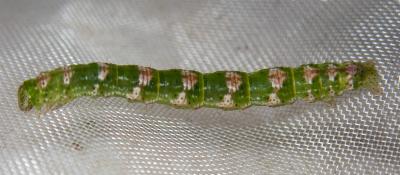
early instar
(Photo: courtesy of
David Akers,
Won Wron, Victoria)

| Trident Casbia CABERINI, ENNOMINAE, GEOMETRIDAE, GEOMETROIDEA | (donherbisonevans@yahoo.com) and Stella Crossley |

early instar
(Photo: courtesy of
David Akers,
Won Wron, Victoria)
The Caterpillars of this species are green, with a curious dorsal orange mark with white sides and four black dots, on the back of each segment.

The head is green with an intricate pattern of black dots. The caterpillars are missing the three anterior pairs of prolegs, so they walk in a looper fashion.
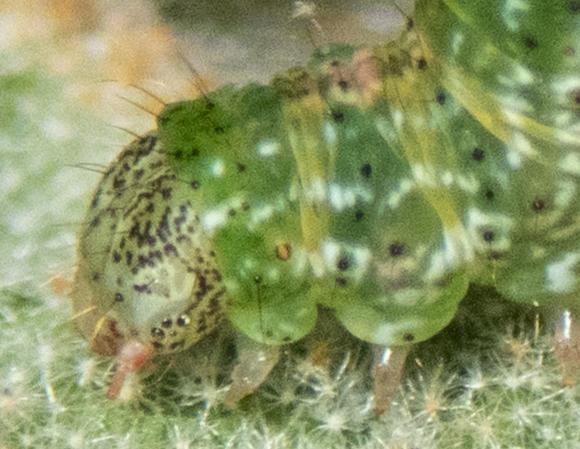
Later caterpillars develop white patches along the sides, resembling their foodplant colorings. The caterpillars have been found feeding on
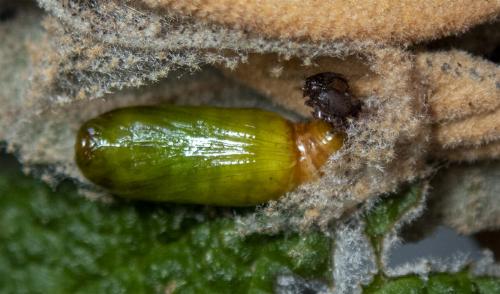
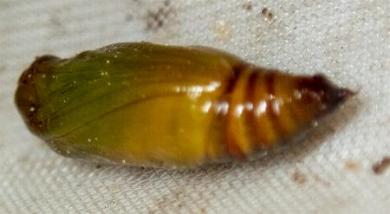
pupa
(Photos: courtesy of
David Akers,
Won Wron, Victoria)
The caterpillar grows to a length of 3 cms. It constructs a shelter in which to pupate, formed from curled leaves and shoots joined with silk. The pupa has a length of about 1 cm.
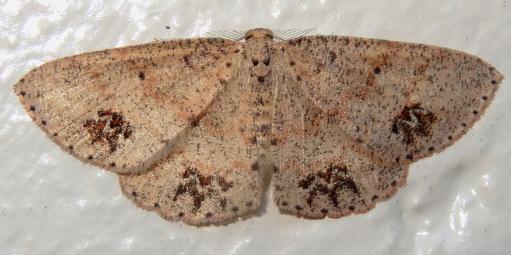
The adult moths are pale brown or grey with a variable colour double trident-like mark near the margin of each wing, and often three dark dots like a little happy face on the thorax. The wingspan is about 3 cms.
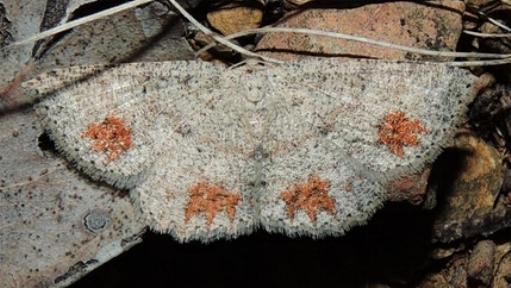
The species occurs in
Further reading :
Marilyn Hewish,
Moths of Victoria: Part 7,
Bark Moths and Allies - GEOMETROIDEA (A),
Entomological Society of Victoria, 2016, pp. 14-15.
A. Jefferis Turner,
New Australian species of Boarmiadae (Lepidoptera),
Proceedings of the Royal Society of Queensland,
Volume 58 (1947), pp. 96-97, No. 61.
 caterpillar |  butterflies |  Lepidoptera |  moths |  caterpillar |
(written 31 December 2016, updated 10 May 2023)